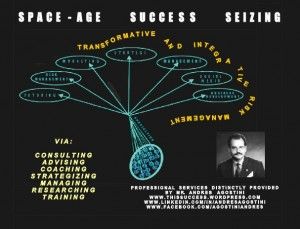America has been a spacefaring nation since 1958. Over the past fifty-three years, America overtook its first rival, the Soviet Union (spacefaring since 1957), and maintained its supremacy in the aerospace and aeronautical industries, having the most developed and successful space program, the strongest private aerospace/aeronautical industry, and the most intelligent engineers and scientists. During times where space exploration and advanced scientific research programs seem inappropriate to publicly fund and continue where economic difficulties, contested military actions, and other civil/financial issues seem to demand precedence, it needs to be promoted that NASA (National Aeronautics and Space Administration) is of immense importance to the security and welfare of the United States of America and must remain a national priority. NASA drives STEM (science, technology, engineering, and mathematics) education as well as the development of commercial and defense technologies and works with private engineering and science companies across the country, employing thousands of brilliant engineers, scientists, and technicians to ensure the safety of the American people and maintain the technological and explorational prestige this country has always possessed.
NASA’s accomplishments are inspirational to students. It is capable of orbiting people around the planet in minutes, building a space station, and placing man on the moon, and in doing so powerfully inspires individuals to aspire for careers with the organization. In order to become involved with NASA, a student must study science, technology, engineering and/or mathematics, and by creating a strong incentive for people to study these topics, demand for STEM education increases. As demand increases, more STEM programs will develop and more people will become involved in STEM disciplines. Students studying STEM subjects develop critical thinking skills and strong senses of logic to overcome various problems and conflicts. New generations of engineers and scientists will rise to replace the retiring generations and surpass them in their accomplishments, but only will do so if opportunities to take such careers exist. Should NASA decay, it won’t only be NASA careers disappearing. Jobs at firms like Lockheed Martin, The Boeing Company, Northrop Grumman, Raytheon, and SpaceX among others will be lost as well and some of these firms will face immense downsizing or possibly even be forced to shut down, severely harming motivation for younger American students to pursue a degree or career in STEM related fields.
One of the greatest positive externalities of NASA is the technology developed as ‘spin-off’ used in the commercial and defense industries. When NASA was tasked with putting man on the moon, NASA realized the Apollo capsule would need computing systems installed within it that were far greater in power and far smaller than those currently in use and therefore tasked private industry with the development of compact computing devices that later became the PC and laptop. Without NASA funding, heart rate monitors, thermal video imaging, light emitting diodes, and velcro among many other technologies would not have been developed. While current domestic debate surrounds whether or not NASA should be downsized, enlarged, or completely phased out over time, foreign countries and blocs such as China, India, and the European Space Agency are investing even more time and money into improving their programs, their educational efforts, and plan to surpass American capabilities within the near future. Technological innovation, though still very prevalent within the United States, is beginning to grow very rapidly in foreign countries and more new technologies are being imported rather than exported every day. Instead of questioning whether or not NASA is necessary, America should be questioning what seemingly impossible task NASA should be working on next. Originally, the Apollo project seemed insurmountably difficult. But when national security threats (Soviet technological capabilities during the Cold War) met technological challenges (the Apollo program), NASA proved to be an irreplaceable source of innovation and wonder that united a nation, inspired a generation with dreams of space exploration, and provided a feeling of security to millions of people who feared another devastating war.
Which is also why NASA is critically important in the defense industry as a customer. NASA helps improve private and public defense and communication technologies. The relationship between NASA and the private industry is very symbiotic. NASA develops a plan or project and administers/contracts production and testing tasks out to the private industry, challenging thousands of engineers and scientists to improve their designs and inspires technological and manufacturing developments, which in turn allow NASA to complete its mission in an efficient and effective manner. China has proven it is capable of destroying our satellites by destroying one of its own and has announced its desire to develop a space program separated from America’s influence and plans to land on the moon in 2020. India, Israel, Iran, Pakistan, Romania, Japan, and Ukraine among others have all had confirmed launches and are working to become space powers themselves, developing their own aerospace industries and programs. Iraq and North Korea have also both touted successful launches, though their success are unconfirmed. NASA helps to keep America competitive by constantly challenging private industry and by making sure its goals for space and technological development are always beyond those of other countries, which helps to prevent enemies from defeating our technologies, thus keeping us safe.
Continue reading “The Importance of NASA” »












